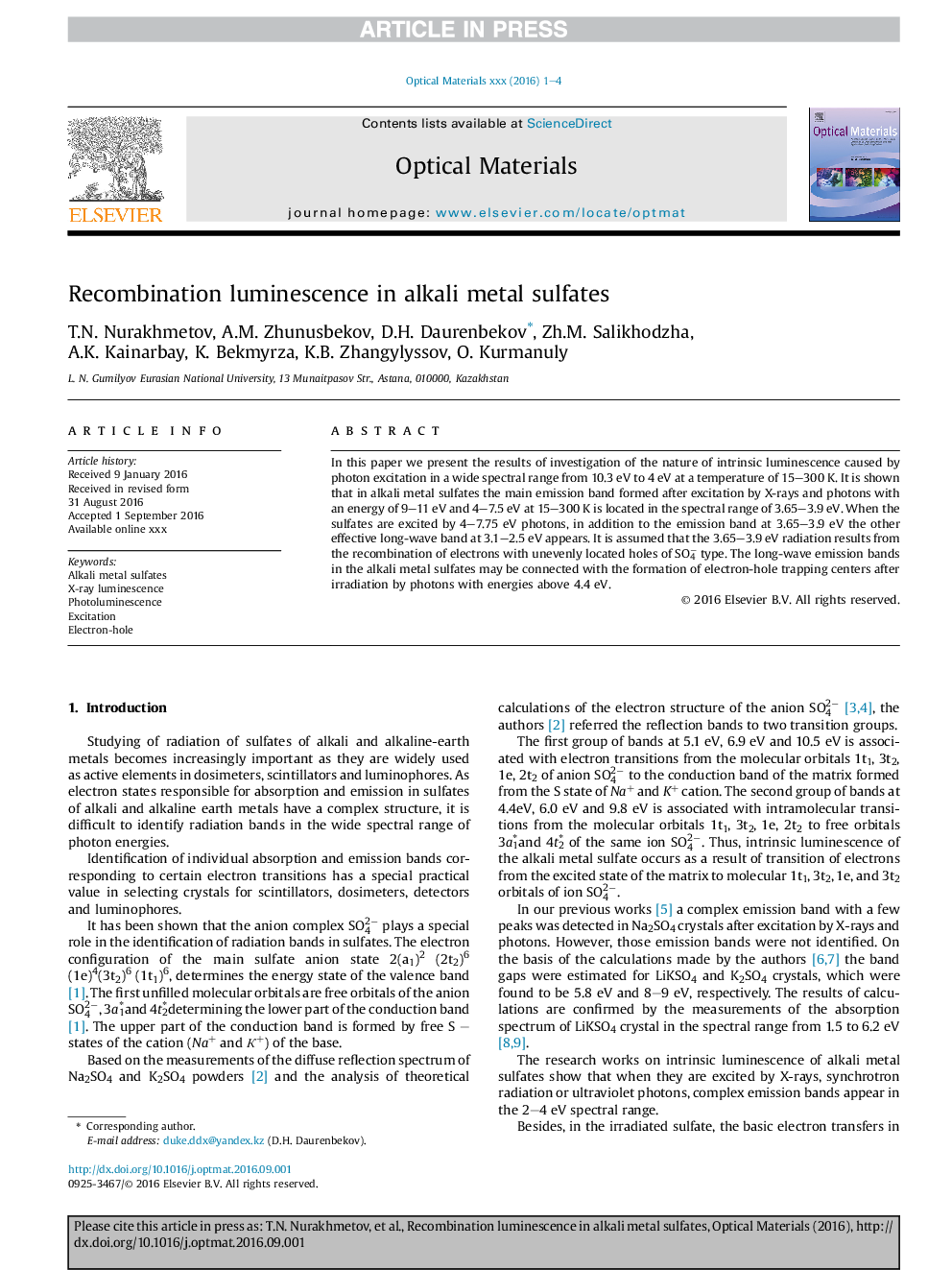| Article ID | Journal | Published Year | Pages | File Type |
|---|---|---|---|---|
| 5442952 | Optical Materials | 2016 | 4 Pages |
Abstract
In this paper we present the results of investigation of the nature of intrinsic luminescence caused by photon excitation in a wide spectral range from 10.3Â eV to 4Â eVÂ at a temperature of 15-300Â K. It is shown that in alkali metal sulfates the main emission band formed after excitation by X-rays and photons with an energy of 9-11Â eV and 4-7.5Â eVÂ at 15-300Â K is located in the spectral range of 3.65-3.9Â eV. When the sulfates are excited by 4-7.75Â eV photons, in addition to the emission band at 3.65-3.9Â eV the other effective long-wave band at 3.1-2.5Â eV appears. It is assumed that the 3.65-3.9Â eV radiation results from the recombination of electrons with unevenly located holes of SO4â type. The long-wave emission bands in the alkali metal sulfates may be connected with the formation of electron-hole trapping centers after irradiation by photons with energies above 4.4Â eV.
Related Topics
Physical Sciences and Engineering
Materials Science
Ceramics and Composites
Authors
T.N. Nurakhmetov, A.M. Zhunusbekov, D.H. Daurenbekov, Zh.M. Salikhodzha, A.K. Kainarbay, K. Bekmyrza, K.B. Zhangylyssov, O. Kurmanuly,
